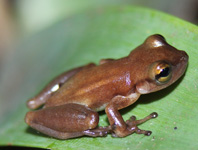Abstract
On the basis of comparison between the female holotype of Dolichopus nimbatus Parent and the female paratype of D. balius Meuffels, and comparison of a male paratype of D. balius with the description of D. thalhammeri Knézy, D. balius and D. thalhammeri are designated junior synonyms of D. nimbatus. Dolichopus nimbatus ranges from northern France and Belgium to southern Turkey. Ecological features might explain its rarity in collections.
References
Bernasconi, M.V., Pollet, M., Varini-Oojen, M. & Ward, P.I. (2007) Phylogeny of European Dolichopus and Gymnopternus (Diptera: Dolichopodidae) and the significance of morphological characters inferred from molecular data. European Journal of Entomology, 104, 601–617.
https://doi.org/10.14411/eje.2007.075Boros, I. (1957) The tragedy of the Hungarian National History Museum. Annales Historico-Naturales Musei Nationalis Hungarici, Series Nova, VIII, 491–504.
Brooks, S. (2005) Systematics and phylogeny of Dolichopodinae (Diptera: Dolichopodidae). Zootaxa, 857, 1–158.
Cumming, J.M. & Wood, D.M. (2009) 2. Adult Morphology and Terminology. In: Brown, B.V., Borkent, A., Cumming, J.M., Wood, D.M., Woodley, N.E. & Zumbado, M. (Eds.), Manual of Central American Diptera. NRC Research Press, Ottawa, pp. 9–50.
Enderlein, G. (1912) Zur Kenntniss aussereuropäischer Dolichopodiden. I. Tribus Psilopodini. Zoologische Jahrbücher, Supplement, 15 (1), 367–408.
Földvári, M. & Papp, L. (2007) Damage in the Diptera Collection of the HNHM, Budapest in the year of 1956. Studia dipterologica, 14 (1), 25–26.
Grichanov, I.Y. (1998) Afrotropical species of the genus Lichtwardtia Enderlein (Diptera: Dolichopodidae). International Journal of Dipterological Research, 9 (3), 221–236.
Knézy, G. (1929) Legyészeti tanulmányok. Folia Societatis Entomologicae Hungaricae, II (1), 1–20.
Meuffels, H.J.G. (1981) Dolichopus balius et Dolichopus ptenopedilus nouveaux Dolichopodidae paléarctiques (Diptera). Bulletin des Recherches Agronomiques de Gembloux, 16 (4), 327–334.
Parent, O. (1927) Contribution à la distribution geographique de quelques espèces de Dolichopodides. Congrès des Sociétés Savantes. Paris et de departements. Comptes rendus, 1926, 449–484.
Pollet, M. (2011) Fauna Europaea: Dolichopodidae. In: Pape, T. & Beuk, P. (Eds.), Fauna Europaea: Diptera, Brachycera. Fauna Europaea version 2.4. Available from : http://www.faunaeur.org (accessed 10 November 2014)
Pollet, M. (2012) 'Uitgestorven' slankpootvliegen, en nieuwe soorten voor België, ontdekt in de Denderstreek. Dendriet, 11 (1), 22–27.
Selivanova, O.V., Negrobov, O.P. & Yang, D. (2010) Redescription of the holotype of Lichtwardtia formosana (Diptera: Dolichopodidae), with new data on its synonymy. Zoosystematica Rossica, 19 (1), 143–146.
Tischler, W. (1948) Biozönotische Untersuchungen an Wallhecken (Ein Beitrag zur Agrarökologie). Zoologische Jahrbücher. Abteilung für Systematik, Ökologie und Geographie der Tiere, 77, 283–400.
Yang, D., Zhu, Y., Wang, M. & Zhang, L. (2006) World Catalog of Dolichopodidae (Insecta: Diptera). China Agricultural University Press, Beijing, 704 pp., XLIV pls.
Zhang, L., Masunaga, K. & Yang, D. (2009) Species of Lichtwardtia from China (Diptera: Dolichopodidae). Transactions of the American Entomological Society, 135 (1+2), 197–203.
https://doi.org/10.3157/061.135.0208

